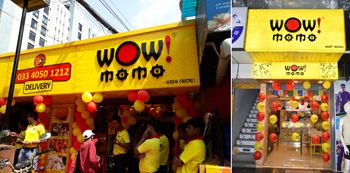The Momo-Factor
Jun 29, 2019 • 44 views
A sorrowful tale of culinary appropriation
So the other day, I was out shopping and very hungry by the end of several 'trial room errors,' so I thought what could be the perfect snack? What could perhaps satiate my hunger at the same time make me perfectly happy with the flavors, and more importantly, as a meat lover, what could fulfill my longing for meat as well as be cheap? The answer comes instantly- Momos, of course! So, I went over to the vendor and asked for a plate of the fantastic stuffed delicacy encased in the aluminum steamer; piping hot served with achaar.

Now before anyone from North India corrects me by saying “its chutney, not achaar", well done-you've explained my anger quite well. What you have done is culturally mansplained me by describing my cuisine and the requisites that come with it. So back to the story, as I took a bite from the yellowed dumpling that is undoubtedly not supposed to be yellow, I was aghast! The taste was so unfamiliar and so vile, I almost spit it out. What a shame! This was supposed to be my plate of soul food, something reminiscent of my hometown Darjeeling, alas, what did I expect from a street food vendor in Delhi attempting to serve up factory made momos?
This is how culinary appropriation has taken place. I am not against people coming up with new ways to interpret food and cuisine, but it so happens that once in a while, I am subject to eve-teasing because of my facial features; Just yesterday while waiting in line, I heard this girl commenting on 'that dress worn by that chinki.' Honestly, cultural appropriation has always been the topic of heated debate, but the latest gist remains. When people of a dominant culture copy or imitate the culture of the minority get away with it while subjecting the latter to harassment and at the same time profiting from it.

Culinary appropriation has been doing the rounds ever since the advent of time and everyone is continuously engaging in it, from Indo-Chinese food to the Indian French toast, to butter chicken Pasta. There was recently an allegation against Marks and Spencers regarding their Vegan Biryani wrap with many of the Indian diaspora suggesting that a Biryani is supposed to contain meat and it can't be Biryani otherwise. That is a far reach considering how Indians regularly spice up authentic Italian dishes or Indianize every single cuisine in existence. So, who are we to blame the others?
But it remains still, that cuisine when it travels should not be stripped of its essence. The flavourful origins, when stripped of its roots cease to be what it originated as. The Momo had its origins in Tibetan cuisine which traveled through the Indian Nepalis or Gorkhas to metropolitan centers such as Delhi becoming popular as savory street food.
There are several differences in Momos here and authentic Momos in Darjeeling or some other places such as Arunachal and Sikkim for instance, mayonnaise is not a frequent dip, and chaat masala sprinkled liberally on momos here would shock people in the hills but I would be proud that the representation of a different cuisine is present despite the differences that persist.
But some street vendors, themselves being Nepali continue to sell factory-made frozen momos, and it dramatically compromises the taste. The recourse to factory made 'maal' is possible because it has been reduced to street food and because of the warm reception by the Delhi-wallas.
It does little to remind me of home and my family, where momos are a family affair (like in every Nepali family) with the whole household participating, volunteering to either dice the meat, or prepare the dough or make the small elaborate designs holding the meat and flour together and contributing to its aesthetic appeal. But such warmth loses its virtue in street food culture usually renowned for the same heat it brings to other North Indian dishes. It’s brutal but persisting and perhaps even urging many to try the authentic taste, so not altogether wrong but bittersweet.
